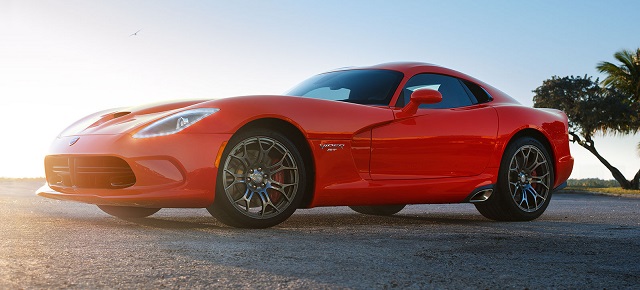The Dodge Viper is More of a Numbers Car Than You Think It Is
Perhaps the two most important numbers associated with the Dodge Viper are those that make up its horsepower and torque ratings: 645 and 600, respectively. However, those aren’t the only meaningful figures attached to America’s V10-powered exotic car.
For instance, the number 20 is significant to the super serpent. That’s how many years the Conner Avenue Assembly Plant in Detroit has been producing it. In fact, that location has generated more than 24,000 Vipers. (From 1992 until 1995, the New Mack Assembly Plant made approximately 6,000.)
Only 64 employees create the new cars – largely by hand.
The number three is also important in the production of a Viper. Each one is built thanks to the efforts of a trio of main areas within the Conner Avenue facility: the chassis line, the engine line, and the final line. It takes a Viper 10 days to go down the complete assembly line.
Five robots punch holes and create “50 features in the Viper frame to establish the dimensional environment to hang panels, such as the hood, deck lids, doors and fenders. The robots then measure 65 vision points to ensure the accuracy of the installation points for other components,” according to FCA.
On the chassis line, workers attach components such as the front and rear suspension, rear brakes, exhaust, fuel tank, and engine to the frame.
The Viper’s massive 8.4-liter V10 and its pistons are also hand-built at CAAP. The power plant is then fully dyno tested before being installed in a car.
After wheel and tire installation, each Viper is aligned. Next comes the roll test, which takes each car up to 90 mph. The rolling chassis and V10 then move to the “the final line, where body panels, seats, window glass, and other interior and exterior components come together in sequence to form that easily recognizable and timeless Viper shape.”
The big snake’s skin – all 20 parts of it – are prepared, painted, and finished over the course of 145-160 man hours. The stripes on a Viper alone can take up to 18 hours to lay down.
Additional production steps include headlight aim, emissions, and water-tightness evaluations; a simulated and/or real road test (one vehicle a day for the latter, weather permitting); a 120-point inspection of the body’s fit and finish; an electrical check; and a buffing and polishing. Afterward, each Viper is loaded onto a covered transporter for customer delivery.
Chime in with your thoughts on the forum. >>
via [FCA]
photos [Dodge]




